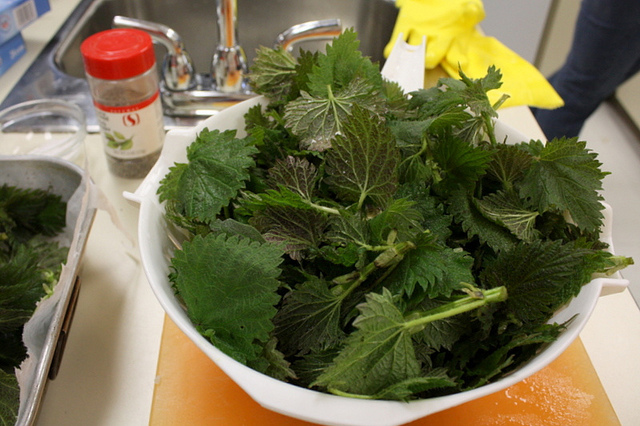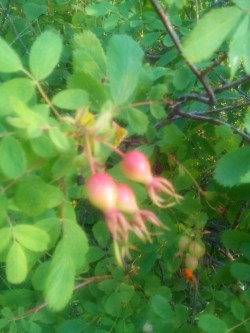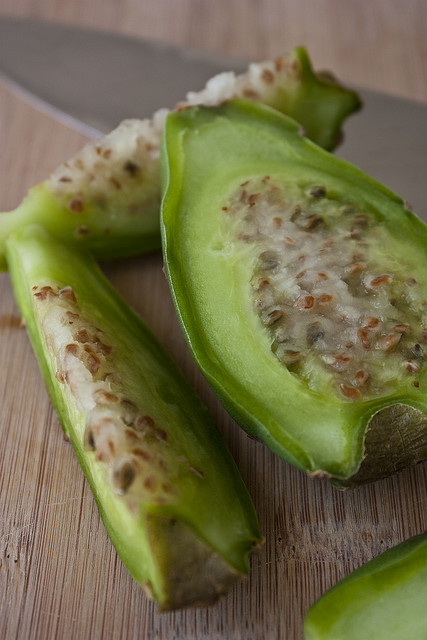Yes, you and kale are best friends and your fridge drawers are overflowing with beets and broccoli. But if you are looking to shake things up a little bit, here are ten unconventional but highly nutritious plants that you should incorporate into your diet. They are probably not the things you buy every week at the grocery store–but their healing properties make the purchase worthwhile.
Stinging Nettle:
Stinging Nettle, botanically known as Urtica dioica, is an exceptionally nutritious plant. The plant is rich in vitamin C, A, iron, potassium and magnesium. The leaves and the stem of this plant sting, when brushed against the skin causes a sudden stinging effect. This effect disappears when the plant is cooked or dried. You can add stinging nettle to soups, curries and teas. Don’t forget to wear gloves while handling it.
Dandelion:
Dandelion plant is an excellent source of iron. It contains more iron than most other fruits and vegetables. Dandelion plant also contains high levels of beta-carotene and vitamin C. Regular consumption of the leaves like including it in your salads protects the retina from macular degeneration, the leading cause of blindness among the elderly. In addition to the leaves, the roots and flowers are also rich in several nutrients. Add a few of dandelion leaves to your salad to add an appealing taste. You can also add ground dandelion root to your coffee.
Parsley:
Parsley is recognized as one of the most functional plants found in nature. The herb is used widely in American and Mediterranean cuisine. Parsley leaves are added to pasta, salads and smoothies for a delicious treat. Chewing parsley can also help freshen breath. It contains vitamin A, B, C, potassium, copper and magnesium. Lutein in parsley protects the body from oxidative damage. It also contains health benefiting volatile oils like lime limonene, Eugenol and alpha-thujene.
Wild Rose Hips:
Rose Hips are an incredible source of vitamin C. It contains 20 times more vitamin C than oranges. It also contains small concentrations of Vitamin B, E and K. The antioxidants in rose hips wipe the free radicals from the body. Soak the rose hips for at least 12 hours before using them. Add rose hips to your jams and beverages for a healthy treat.
Camellia Sinensis:
Green tea is native to China and is cultivated widely in Japan. The tea is made from the fermented leaves of the evergreen shrub Camellia Sinensis. The leaves of camellia sinensis are well known for its antioxidant and polyphenol content. The tannins present in green tea offer a host of health benefits. Epigallocatechin, the most active tannin in green tea, protects the DNA and prevents the proliferation of cell colonies. The leaves of camellia sinensis also help to fight cancer, allergies, rheumatoid arthritis and periodontal diseases.
Cilantro:
Cilantro, also known as coriander, is a popular Mediterranean herb. This plant contains chemical compounds like amino benzoic acid and phytochemicals that provides various health benefits. It is very useful for treating cough and other lung disorder. Additionally, cilantro is also rich in antioxidants, essential oils, dietary fiber and vitamins.
Mint:
Mint is a highly fragrant plant, used for seasoning a variety of dishes. The plant contains numerous chemical derived compounds like antioxidants, menthol and menthone. These compounds are responsible for giving a natural cooling sensation. It activates the salivary glands, helping you with digestion. The anti-spasmodic property of mint helps in the treatment of irritable bowel syndrome.
Basil:
Researchers have found that the compounds present in Basil can lower the risk of cancer and cardiovascular diseases. Phytosterol in this plant is very effective in lowering the bad cholesterol that often leads to atherosclerosis. The nutrients present in basil increase the elimination of LDL from the gut. Basil also provides anti-inflammatory properties. It is mostly added to curries and pasta to add a distinct flavor and aroma.
Rosemary:
Rosemary plant contains high levels of antioxidants, monounsaturated fats, Vitamin A, B complex, C, D and E. It contains minerals like copper, iron, fluoride, manganese and magnesium. This fragrant herb stimulates the immune system, protecting you from diseases. The anti-inflammatory properties of rosemary make it very useful for reducing the severity of asthma attacks. It promotes the circulation of blood in the brain, improving memory and concentration power. Add some chopped rosemary to your soup, salad dressing and lasagna.
Prickly Pear:
Prickly Pear is found widely in the deserts of North America. The plant is a low calorie and cholesterol free source of antioxidant, calcium and vitamin C. A diet rich in prickly pear can enhance your health, lowering the possibility of serious medical conditions. The plant even bear fruits that looks like purple colored pear. Make sure you remove the small spines on the outer skin before consumption.
What’s your favorite unusual plant? And how do you eat it? Please share!
Also see: Healing Wild Plants of Montana
Foraging for Chicken of the Woods
How to Grow Your Kitchen Garden
__
Photo: Leslie Seaton via Flickr; Jessica Ferguson; Patrick Breen via Flickr







